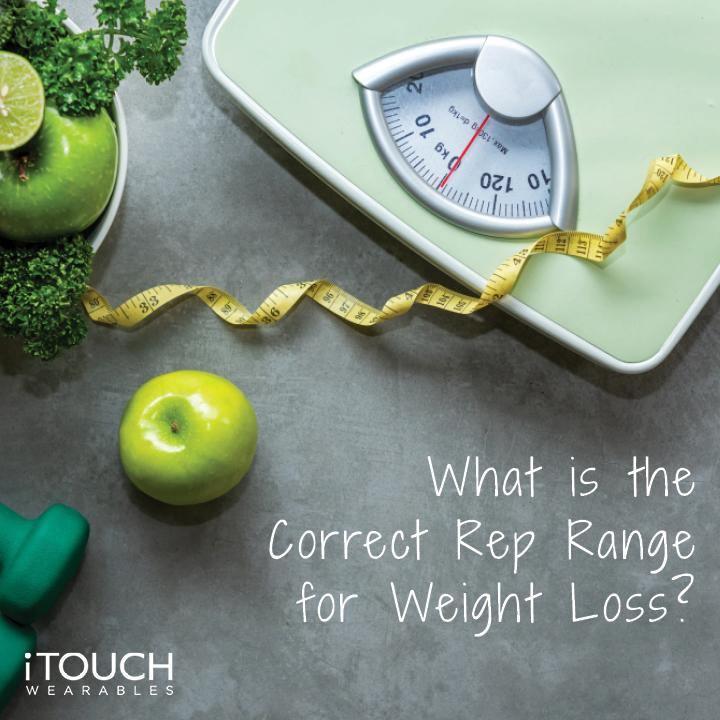
What is the Correct Rep Range for Weight Loss?
The last time you went to the gym to lift weights, how many sets and reps did you do of each exercise? The answer is probably the same for most people: 3 sets of 10 reps. If you are like me though, you may have questioned why this is apparently the magical number. Why is 3X10 the default set-and-rep scheme so many people use? Does it work as well as advertised? And most importantly, is there a better way to make the most of your workout? Whether you’re aiming to gain muscle, build strength, cross-train, or even just simply lose weight, there’s a set-and-rep range that will work best for you, and the numbers might not be what you expect.
However, before we dive into the correct rep range for weight loss and other training, it is important to first learn where the 3X10 approach came from. For starters, this approach originated in the 1940s. Army physician Dr. Thomas L. DeLorme needed a faster way to get his injured soldiers back on the battlefield. Typical rehab protocols called for light weights and high reps, but soldiers were spending anywhere from 6 to 9 months recovering. DeLorme, an avid weightlifter himself, knew there had to be a better way. Inspired, DeLorme developed a regimen that called for 3 sets of 10 reps with increasingly heavier weights, a drastic change from the light weights and endless reps previously prescribed. The results were outstanding, and soldiers returned to battle faster than ever.
If you are a normal person, and not an injured soldier from the 1940s, you might still be asking if this is the right thing for you? The thing is, there’s probably a better set-and-rep range for you than 3X10. Check out our suggestions below :
1 - To Lose Weight

Sets: 4
Reps: 8
Intensity: 1 to 2 Reps
Equipment: Free Weights, Body Weight, or Machines
When people want to lose weight, they automatically assume they should do light weights for tons of reps. Unfortunately, it just doesn’t work that way. When attempting to lose weight, you’re likely to be in a caloric deficit (such as eating fewer calories than you’re burning), which means you won’t have a ton of energy reserved to do high reps. Instead, stick to moderate weights and moderate reps. Heavier weights also give your body a reason to hang on to hard-earned muscle as you lose weight.
2 - For Body-Building

Sets: 5
Reps: 3 to 5
Intensity: 2 to 3 Reps
Equipment: Mostly Free Weights or Machines
There’s no sugar coating it: if you want to start body-building, you are going to have to put in some serious work. And by work, I mean lifting progressively heavier weights over time. Skip the light dumbbells and sets of 20. Instead, opt for big free-weight exercises that use lots of muscles (like squats, dead-lifts, and even rows) and stick with lower rep ranges.
3 - To Build Muscle

Sets: 3
Reps: 8 to 12 (Depending On Fitness Level)
Intensity: 1 Rep
Equipment: Free Weights or Machines
While heavy weights are best for getting stronger, building muscle actually may require a little more skill. As silly or confusing as it may sound, the “mind-muscle” connection is very real when it comes to gaining more muscle and sculpting your body. In order to build muscle, it is recommended that you use lighter weights and focus on feeling the target muscle squeezing and burning. Use the same weight for each set, but gradually increase the reps each set until you’re just shy of failure.
4 - To Run Faster or Jump Higher

Sets: 8 to 10
Reps: 3
Intensity: Light To Moderate
Equipment: Free Weights
Running faster and jumping higher requires more efficient recruitment of fast-twitch muscle fibers. While it’s usually best to lift weights in a slow, controlled manner, lifting weights explosively targets your fast-twitch fibers to make you faster and more athletic. Use lower-body free-weight exercises like squats or kettle-bell swings and keep the reps low so you can put everything you have into every set. And finally, don’t go too heavy; if the weight isn’t moving quickly, lighten the load.
5 - To Build Endurance

Sets: 1
Reps: 12 or more
Intensity: Keep Going Until You Cannot Anymore
Equipment: Machines
Sometimes one set is all it takes. If endurance is the name of the game, it’s likely you’re using strength training as cross-training for a sport like running, cycling or swimming. Being brutally strong isn’t all that important, so pick a weight, do as many reps as you can and move on to the next exercise. Machines work best for training til failure since you’re less likely to use poor technique compared to free-weight exercises.
Share with us if you were surprised by these suggestions and facts by following us on Instagram @itouchwearables and Facebook @itouchwearables and by dropping a comment and like. Also, be sure to check out our new articles published daily and the latest styles on iTouchWearables.com!
-Patrick


